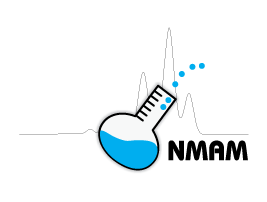Antimony

Overview
CAS No. 7440-36-0
Antimony (Sb) is a silver-white brittle solid or a dark-gray, lustrous powder. It can be harmful to the eyes and skin. Antimony can also cause problems with the lungs, heart, and stomach. Workers may be harmed from exposure to antimony and its compounds. The level of exposure depends upon the dose, duration, and work being done.
Antimony is used in many industries. It is used to make flame-proofing materials and in some paints, glass, and batteries. Antimony is coupled with materials like lead to improve their durability. Some examples of workers at risk of being exposed to antimony include the following:
- Employees involved in metal soldering and brazing work
- Workers in the glass working industries
- Employees involved in antimony mining and extraction processes
- Workers who work around antimony compounds and alloys
NIOSH recommends that employers use Hierarchy of Controls to prevent injuries. If you work in an industry that uses antimony, please read chemical labels and the accompanying Safety Data Sheets for hazard information. Visit NIOSH’s page on Managing Chemical Safety in the Workplace to learn more about controlling chemical workplace exposures.
The following resources provide information about occupational exposure to antimony. Useful search terms for antimony include “antimony metal,” “antimony powder,” and “stibium.”
NIOSH Chemical Resources
Related NIOSH Resources
- NIOSHTIC-2 search results on antimony—NIOSHTIC-2 is a searchable database of worker safety and health publications, documents, grant reports, and journal articles supported in whole or in part by NIOSH.
- Immediately Dangerous to Life or Health IDLH) Value Profile: Antimony (as Sb)—NIOSH reviews relevant scientific data and researches methods for developing IDLH values.
- NIOSH Worker Health Study Summaries—NIOSH conducts research to prevent illnesses and injuries in the workplace. The NIOSH Worker Notification Program notifies workers and other stakeholders about the findings of these research studies.
Selected Publications
- Criteria for a Recommended Standard: Occupational Exposure Standard for Antimony—DHHS (NIOSH) Publication No. 78-216. This report increases awareness and recommends work practices to reduce exposures.
- Elements by ICP (Nitric/Perchloric Acid Ashing) No. 7300—Sampling and measurement from NMAM, fourth edition.
- Elements by ICP (Aqua Regia Ashing) No. 7301—Sampling and measurement from NMAM, fourth edition.
- Elements by ICP (Hot Block/HCL/HNO3 Digestion) No. 7303—Sampling and measurement from NMAM, fourth edition.
- Elements (in blood or tissue) No 8005—Sampling and measurement from NMAM, fourth edition.
- Pseudo-Outbreak of Antimony Toxicity in Firefighters, Florida, 2009—MMWR Vol. 58, No. 46.
- Occupational Safety and Health Guidelines for Antimony and Its Compounds (as Sb)
Related Resources
- ATSDR ToxFAQs for Antimony
- ATSDR Toxicological Profile for Antimony
- EPA Chemistry Dashboard: Antimony
- EPA Hazard Summary: Antimony Compounds
- EPA Integrated Risk Information System (IRIS): Antimony
- IARC Monograph (Vol. 47): Antimony Trioxide and Antimony Trisulfide
- NLM Haz-Map: search results for Antimony
- NLM TOXNET: Antimony, Elemental
- NTP Draft Report on Carcinogens Monograph on Antimony Trioxide
- OSHA Hazard Communication
- OSHA Occupational Chemical Database: Antimony, Metal & Compounds
- New Jersey Hazardous Substance Fact Sheets: Antimony
International Resources
- Canadian Centre for Occupational Health and Safety (CCOHS): Antimony
- European Chemicals Agency (ECHA): Antimony
- Gestis Substance Database
- International Antimony Association
- International Chemical Safety Card: Antimony
- IPCS INCHEM: UKPID Monograph: Antimony Trioxide
- OECD Global Portal to Information on Chemical Substances



